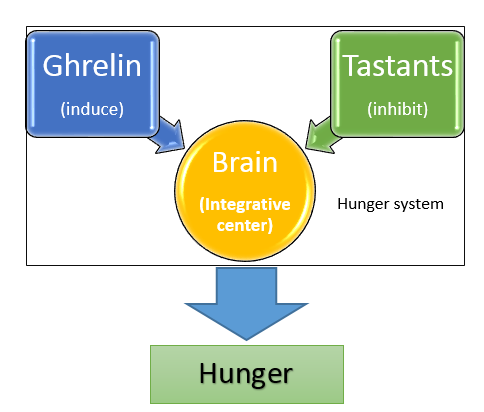Taste and the regulation of food intake:
insights and comments
Palavras-chave:
Ghrelin, Eating, taste, mathematical biology, Computer Simulation, Flavor IntensifierResumo
A modest archetypal of satiation is that it boils down primarily to two categories of signals transmitted from the gastrointestinal tract to the brain: stomach and intestine sensing and metabolism. Novel investigations endow us with the view that an extension of this traditional model is conceivable and called for, wherein intestinal satiation is the byproduct not only from signals related to the caloric content of ingested nutrients, but also from noncaloric properties of ‘tastant molecules’ in foodstuff. On this paper we discuss a recently published paper regarding the impact of tastants (e.g., noncaloric substance widely used as taste enhancers) on hunger and food intake. We gather the in vivo results (nasoduodenal infusions of tastants) with a recently developed mathematical model for ghrelin by the author and co-workers and we successfully replicate in silico part of the findings. The key results from the abovementioned paper and replicated herein is that tastant can inhibit hunger; with different levels of impact, umami being the strongest one, and the union of them being even stronger.
Downloads

Downloads
Como Citar
Edição
Seção
Licença
Declaro que o presente artigo é original, não tendo sido submetido à publicação em qualquer outro periódico nacional ou internacional, quer seja em parte ou em sua totalidade. Declaro, ainda, que uma vez publicado na Revista Gestão & Saúde editada pela Universidade de Brasília, o mesmo jamais será submetido por mim ou por qualquer um dos demais coautores a qualquer outro meio de divulgação científica.
Através deste instrumento, em meu nome e em nome dos demais coautores, porventura existentes, cedo os direitos autorais do referido artigo à Revista Gestão & Saúde e declaro estar ciente de que a não observância deste compromisso submeterá o infrator a sanções e penas previstas na Lei de Proteção de Direitos Autorias (Nº9609, de 19/02/98).

 Revista Eletrônica Gestão & Saúde está licenciado com uma Licença
Revista Eletrônica Gestão & Saúde está licenciado com uma Licença 